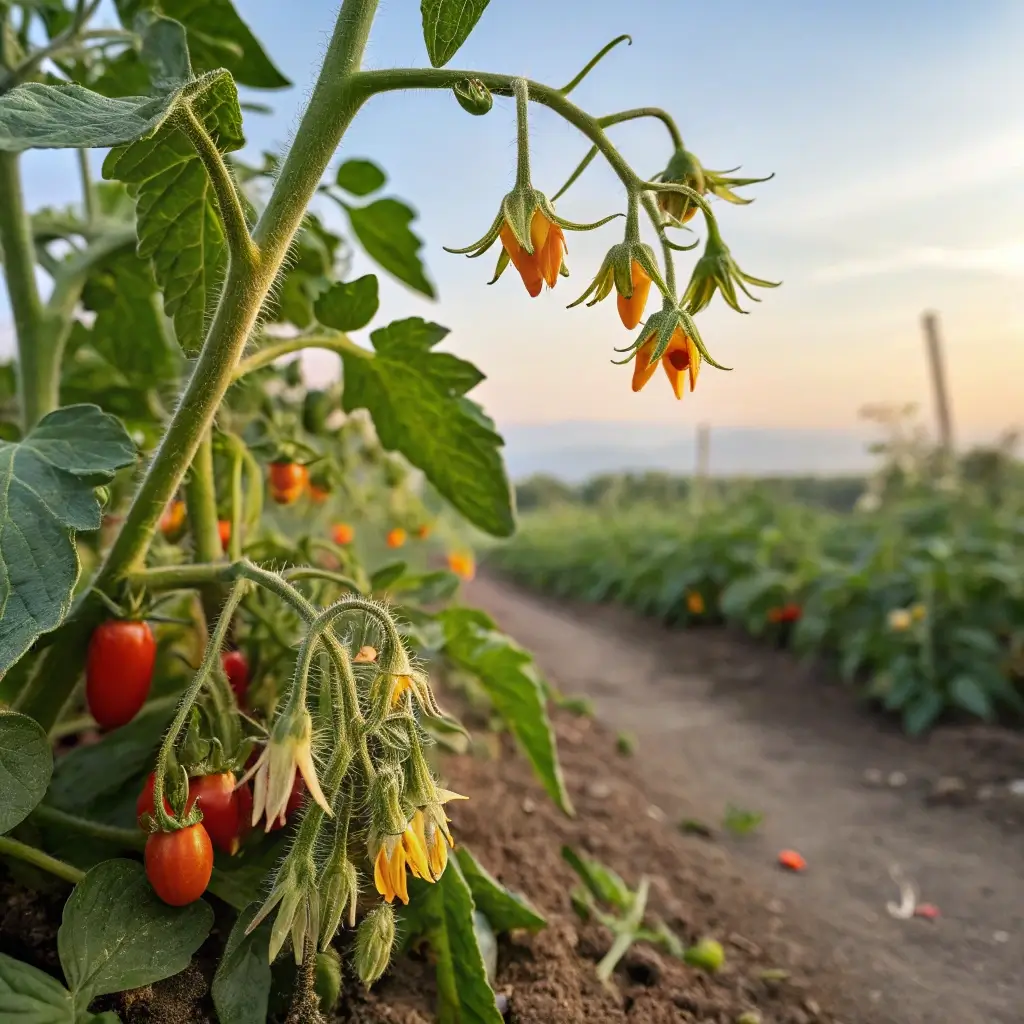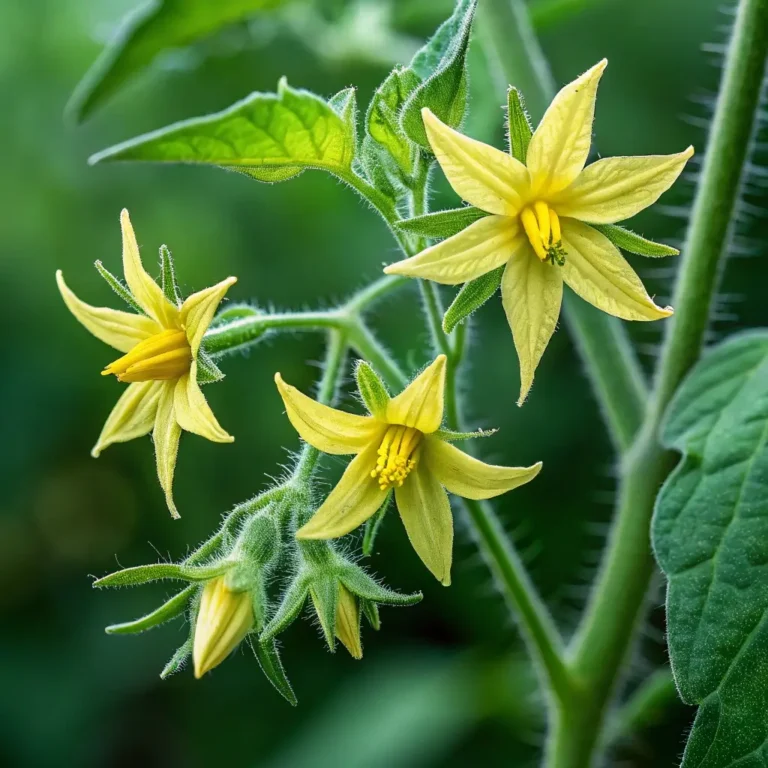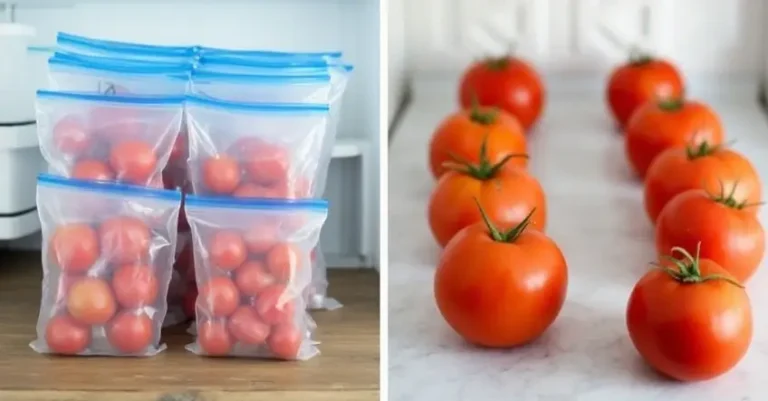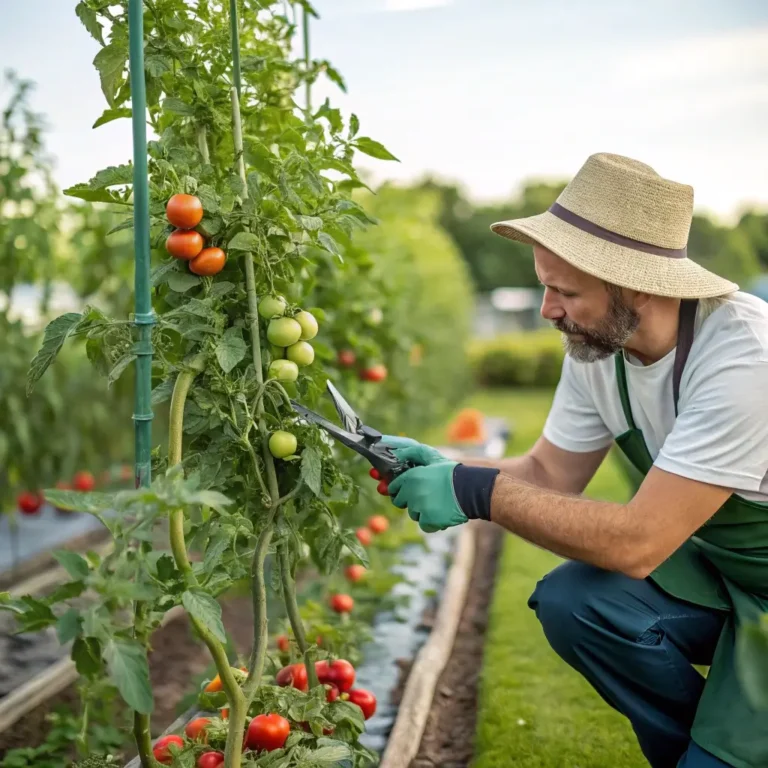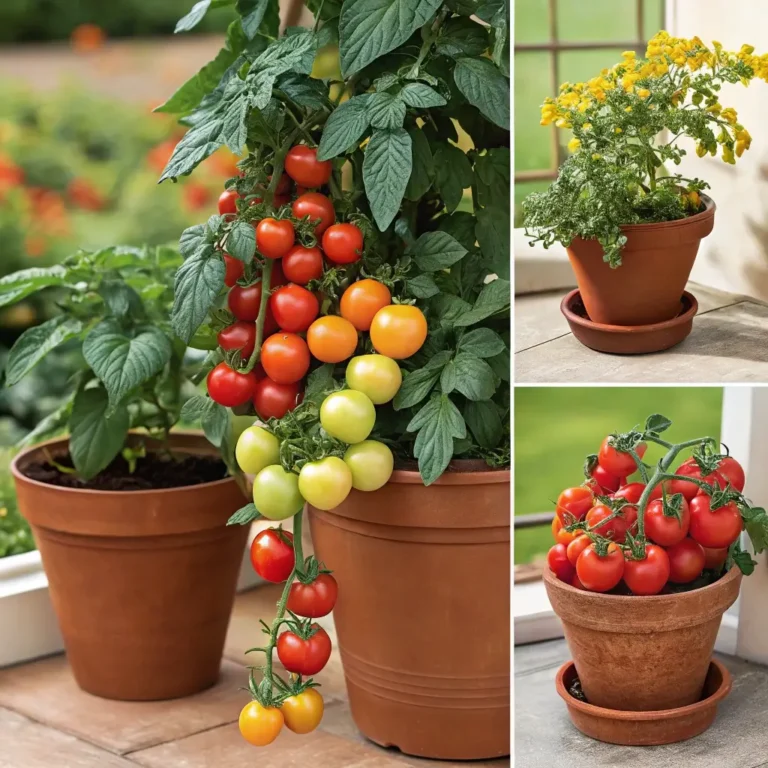What Causes My Tomato Flowers to Fall Off? 5 Easy Fixes!
Table of Contents
Introduction
Did you know that tomato plants can produce up to 10,000 flowers in a single growing season, yet only 50-70% of these will successfully develop into fruit? If you’re watching your tomato flowers drop before producing fruit, you’re experiencing a common but frustrating gardening challenge. What causes tomato flowers to fall off, and how can you fix it? This phenomenon, known as “blossom drop,” affects gardeners worldwide and can significantly reduce your harvest potential. Understanding the science behind blossom drop is your first step toward rescuing your tomato crop and ensuring a bountiful harvest this season.
The Main Causes of Tomato Blossom Drop
Temperature Extremes
Tomatoes are surprisingly temperature-sensitive plants. When temperatures rise above 90°F (32°C) or fall below 55°F (13°C) during flowering, pollen becomes unviable. Research shows that extended periods of heat above 95°F (35°C) can cause nearly 100% blossom drop in many varieties. During these temperature extremes, the plant’s reproductive processes essentially shut down as a survival mechanism.
Improper Watering Practices
Inconsistent watering creates stress that triggers flower abortion. Tomato plants need approximately 1-2 inches of water weekly, delivered evenly. Studies reveal that plants experiencing drought stress followed by sudden overwatering show a 40% higher rate of blossom drop compared to consistently watered plants.
Inadequate Pollination
Without proper pollination, flowers simply fall off. Tomatoes are self-pollinating but require some movement to transfer pollen within the flower. In natural settings, wind and pollinators provide this service, but indoor or sheltered gardens may lack these elements, resulting in pollination rates as low as 15-20%.
Nutrient Imbalances
Excessive nitrogen promotes lush foliage at the expense of flower development. Conversely, insufficient phosphorus directly impairs flowering and fruit set. Research indicates that tomato plants with balanced NPK ratios (nitrogen-phosphorus-potassium) demonstrate 35% better flower retention than those with imbalanced fertilization.
Pest and Disease Pressure
Certain insects and pathogens specifically target flower structures. The tomato thrips, for example, can cause up to 50% flower loss when populations reach critical levels. Fungal diseases like botrytis blight primarily affect flowers during humid conditions, potentially eliminating entire flowering clusters.
5 Easy Fixes for Tomato Blossom Drop
1. Regulate Temperature
Fix: Create temperature buffers using shade cloth during extreme heat (reduces ambient temperature by 10-15°F) or row covers during cool spells (increases temperature by 5-8°F).
Implementation: Install 30-50% shade cloth over plants when temperatures exceed 90°F. During cool periods, use floating row covers overnight and remove during sunny days.
2. Perfect Your Watering Routine
Fix: Implement consistent deep watering and mulching to maintain soil moisture.
Implementation: Water deeply 2-3 times weekly rather than daily light watering. Apply 2-4 inches of organic mulch around plants, keeping it 2 inches away from stems. This approach reduces watering needs by up to 30% while maintaining consistent soil moisture levels.
3. Assist with Pollination
Fix: Manually pollinate flowers during problematic weather periods.
Implementation: Gently tap flowering stems with a pencil or use a small electric toothbrush (without touching the flower) to vibrate branches for 2-3 seconds per cluster. This increases successful pollination by up to 45% during unfavorable conditions.
4. Balance Nutrition
Fix: Switch to a bloom-boosting fertilizer with higher phosphorus content.
Implementation: Apply a fertilizer with NPK ratio like 5-10-10 or 5-10-5 when plants begin flowering. Avoid high-nitrogen fertilizers (like 10-5-5) during the flowering stage. Consider supplementing with 1 tablespoon of Epsom salts (magnesium sulfate) per gallon of water monthly, which supports chlorophyll production and improves nutrient uptake.
5. Manage Pests and Diseases
Fix: Implement integrated pest management and preventative fungal treatments.
Implementation: Introduce beneficial insects like ladybugs (which consume up to 50 aphids daily) or apply neem oil spray (diluted to 0.5-1%) weekly during peak insect seasons. For fungal prevention, ensure proper spacing between plants for adequate airflow and apply copper-based fungicides before humid periods.
Prevention Strategies for Future Seasons
Variety Selection
Choose heat-tolerant varieties like ‘Solar Fire’, ‘Florida 91’, or ‘Heatmaster’ if you garden in hot climates. These specialized cultivars can set fruit at temperatures up to 10°F higher than standard varieties.
Planting Timing
Time your planting schedule to avoid flowering during the hottest weeks. In most regions, this means either early planting (8-10 weeks before last frost) or late planting (for fall harvest) to ensure flowering occurs during moderate temperature periods.
Microclimates
Create protected growing environments using windbreaks, trellises, and strategic garden placement to moderate temperature extremes. South-facing walls provide winter warmth (increasing ambient temperature by 5-7°F), while east-facing locations offer afternoon shade during summer heat.
Conclusion
Tomato blossom drop is frustrating but fixable. By understanding and addressing the environmental and cultural factors causing your tomato flowers to fall off, you can significantly increase your harvest success. Remember that different tomato varieties have varying sensitivities to these stressors, so keep notes on which varieties perform best in your specific growing conditions. With these five easy fixes—temperature regulation, consistent watering, manual pollination assistance, balanced nutrition, and pest management—you’ll be well on your way to a successful tomato harvest.
FAQs
Q: How quickly will I see results after implementing these fixes?
A: You should see improvement in new flower retention within 7-14 days. Existing flowers that have begun the dropping process may not be salvageable, but new flowering clusters should show higher retention rates.
Q: Can container-grown tomatoes experience more blossom drop?
A: Yes. Container plants experience more rapid temperature fluctuations and quicker soil moisture changes. Container tomatoes typically need 25-50% more frequent watering and benefit from larger pots (minimum 5 gallons) to buffer against these stresses.
Q: Is blossom drop more common in certain tomato types?
A: Large-fruited varieties and heirlooms typically show higher rates of blossom drop than cherry or grape tomato varieties. Research indicates that small-fruited varieties can often set fruit in temperatures 5°F higher than beefsteak types.
Q: Will tomato plants produce new flowers after blossom drop?
A: Absolutely. Tomato plants continually produce flowers throughout their growing season. Focus on correcting conditions for upcoming flower clusters rather than lamenting dropped blossoms.
Q: Can overfeeding cause tomato flowers to drop?
A: Yes. Excessive nitrogen promotes vegetative growth at the expense of flowering. Studies show that over-fertilized plants can show up to 60% reduced fruit set compared to properly fertilized plants.

